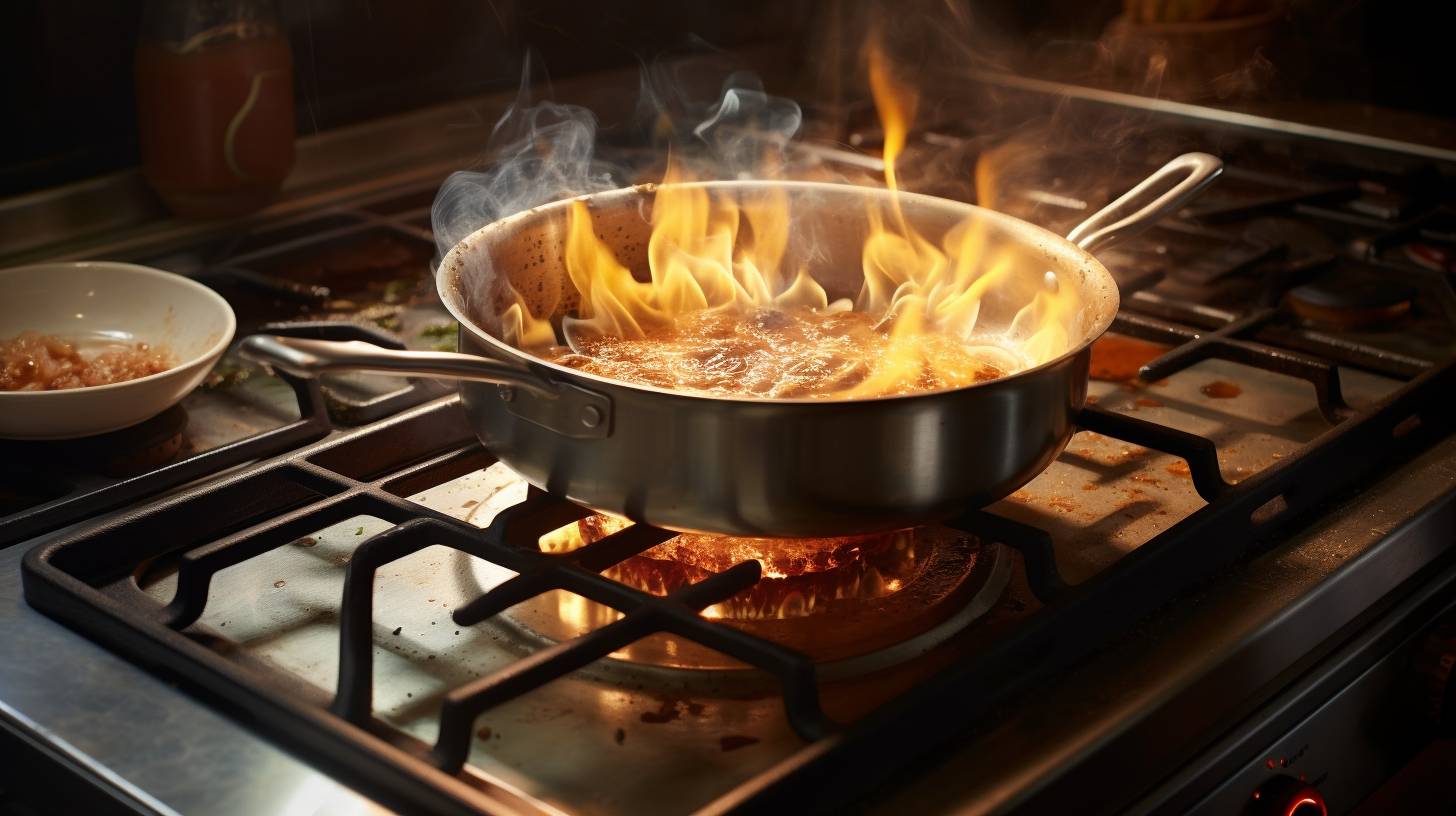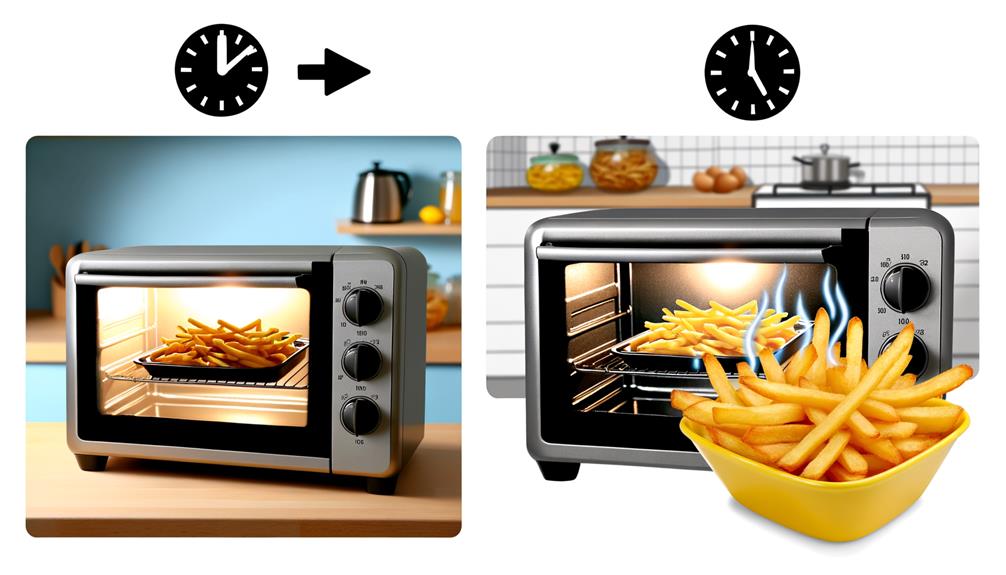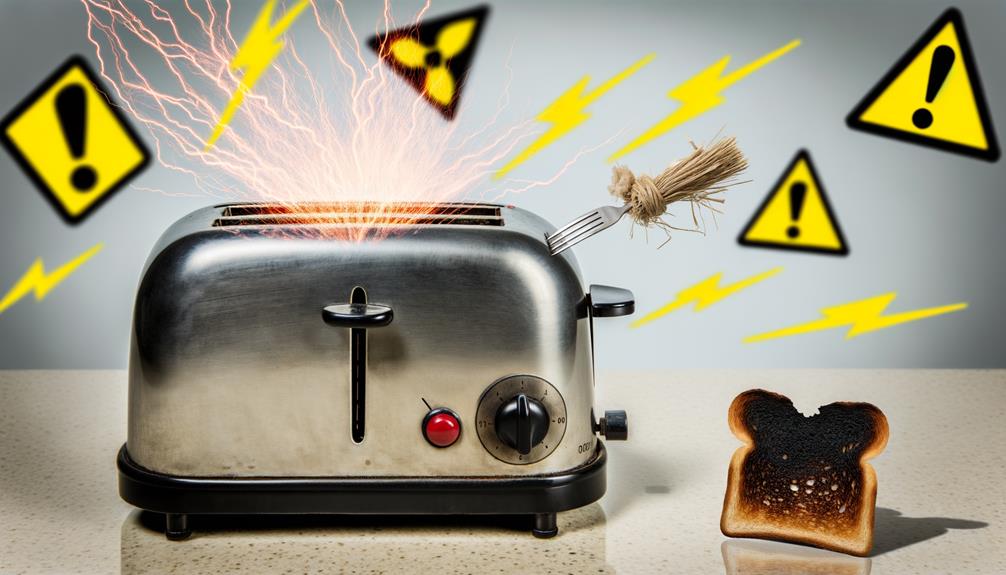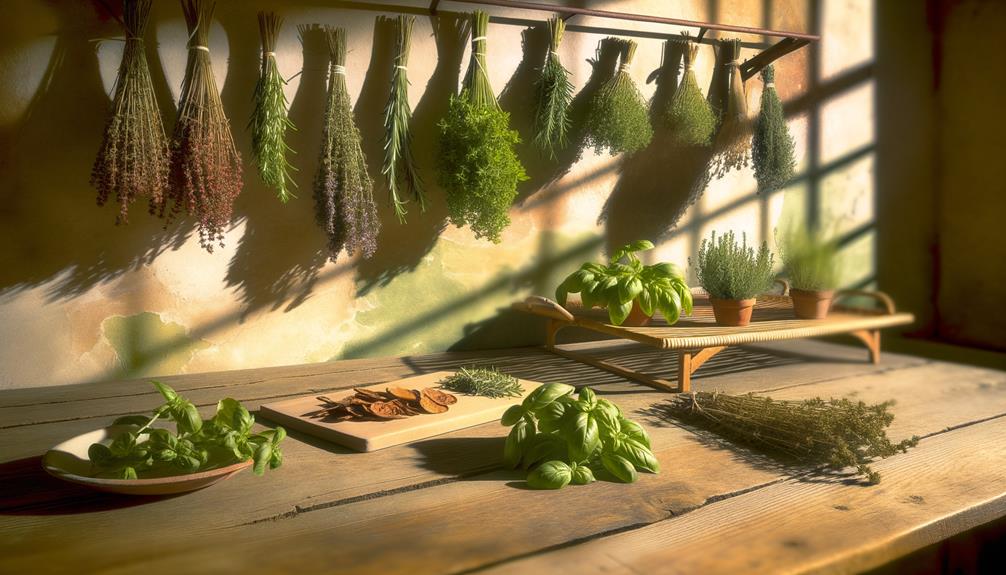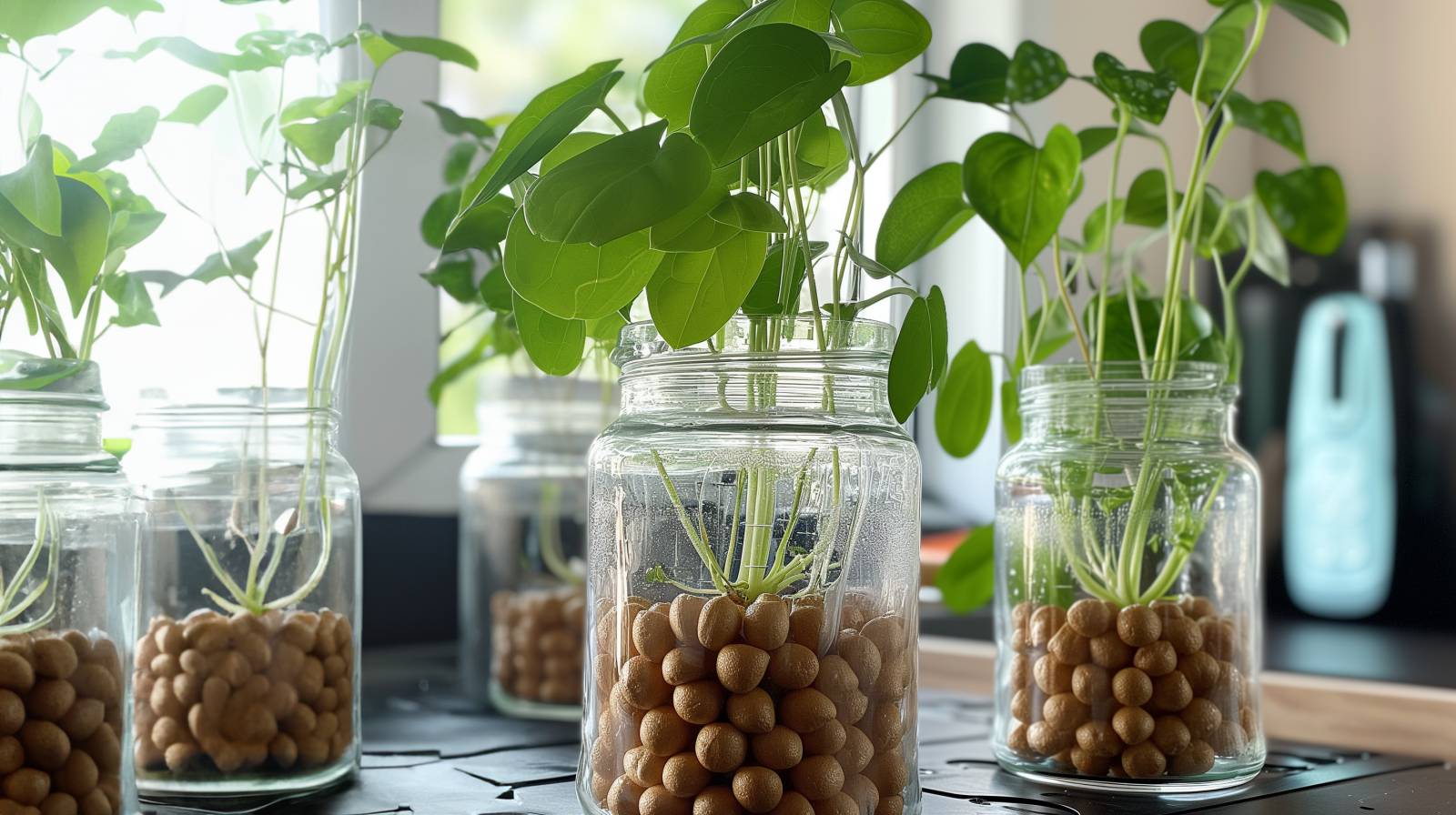You’re probably wondering if you can fry in aluminum foil pans. After all, they’re lightweight, flexible, and tough. They conduct heat well and don’t melt easily, making them a popular choice in many kitchens. But there are some things you should know before you crank up the heat.
Table of Contents
ToggleDid you know that aluminum pans can react with high-acid foods? Or that they can discolor and stain under prolonged heat? And while they’re great for many types of cooking, deep-frying isn’t one of them. The recommended temperature range for frying in these pans is between 320°F-374°F. But don’t fret, with a bit of butter, oil, or a non-stick spray, you can prevent food from sticking.
Keep reading to understand more about the pros and cons of using aluminum foil pans for your frying needs.
Key Takeaways
- Aluminum foil pans are flexible, robust, and lightweight, making them a popular choice for cooking and frying.
- While they conduct heat well and allow for even cooking, they are reactive to high-acidic ingredients and not recommended for deep-frying due to their high temperature and reactivity.
- Preheating, using butter or oil, or adding sunflower oil and salt can prevent food from sticking to aluminum foil pans.
- Non-stick cooking sprays can be used to prevent sticking, offer advantages in oil usage, health, and taste quality, and make cleaning easier.
Is it Safe to Fry in Aluminum Pans?
Whether it is safe to fry in aluminum pans is a commonly debated point. The use of aluminum pans for frying has sparked concerns over potential health risks associated with aluminum leaching into the food. While some studies suggest that small amounts of aluminum can transfer to food during cooking, the Food and Drug Administration (FDA) states that the amount of aluminum leaching is typically minimal and considered safe. However, caution should be exercised when cooking highly acidic or salty foods in aluminum pans, as these may increase the leaching process. To minimize any potential risks, use anodized aluminum pans or opt for alternative cookware options such as stainless steel or cast iron. Ultimately, ensuring proper usage and maintenance of aluminum pans, including avoiding the use of abrasive materials for cleaning, can help maintain their overall safety for frying purposes.
Can You Deep Fry In Aluminum Pans?
Yes, aluminum pans can be used for deep frying. They are lightweight and create an even heat distribution, making them suitable for frying. However, it’s important to ensure that the pan is in good condition without any damaged or worn-out coating as it may affect the food’s flavor.
Understanding Aluminum Cookware
Well, let’s get this straight, frying in aluminum foil pans is a breeze, thanks to their lightweight, quick heating abilities, and the fact that they’re usually treated to prevent any unwanted reactions with your food.
The most common types you’ll find are hard-anodized, coated, and clad. Hard-anodized pans are treated to be durable and resist corrosion, while coated ones have layers of ceramic or non-stick material to prevent your food from reacting with the aluminum. Clad pans are a mix of aluminum and stainless steel, offering both quick heating and durability.
But remember, while clad pans can last a lifetime and are dishwasher safe, hard-anodized cookware usually wears off in 3-5 years and non-stick ones only last 1-2 years.
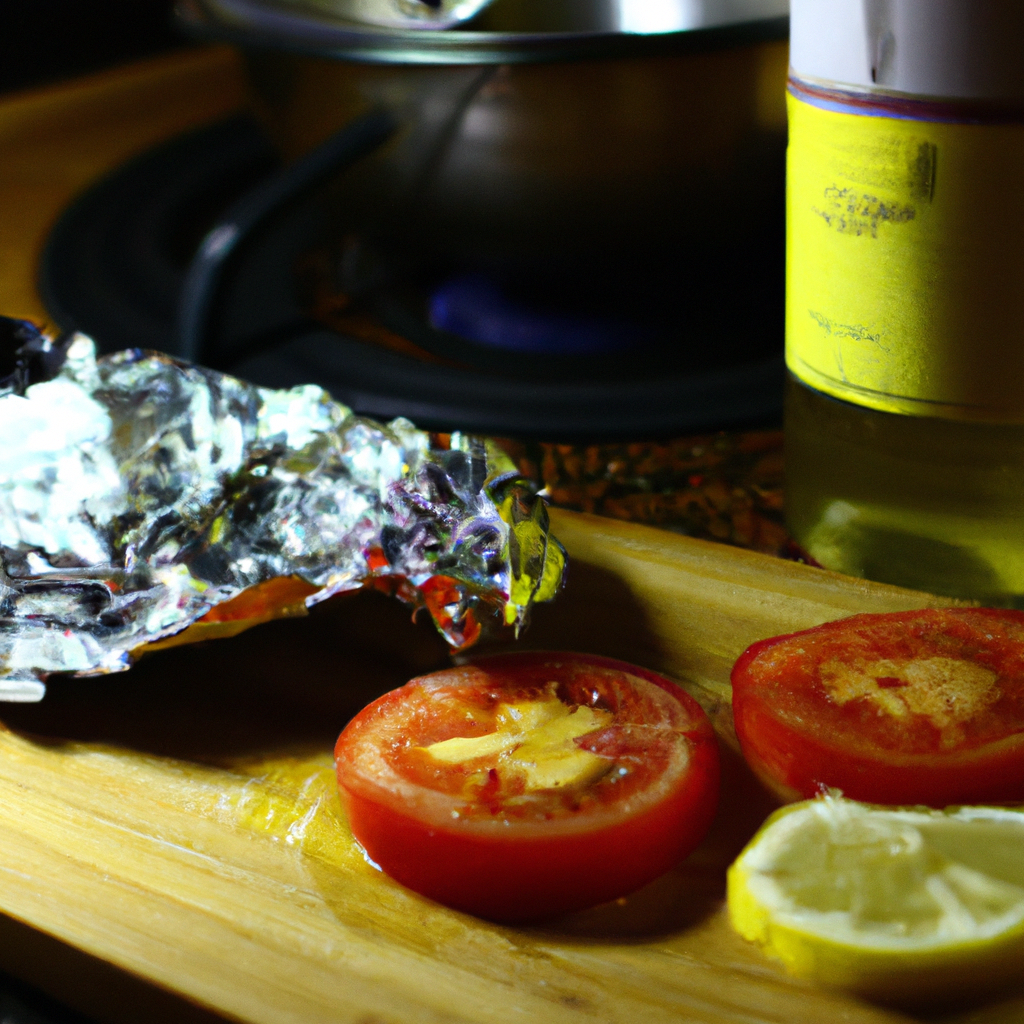
Reactivity with Acidic Foods
Despite their many advantages, such pans can pose a challenge when it comes to cooking high-acidic foods, as they have a tendency to react and pit, potentially leaving a metallic taste in your food. This reactivity can be a real drawback if you’re a fan of dishes that involve tomatoes, vinegar, or citrus fruits.
Imagine biting into your favorite pasta sauce only to be met with a strange, off-putting flavor. Picture your excitement for a homemade lemon cake falling flat due to an unexpected metallic aftertaste. Visualize your perfect salad dressing turning into a disaster because of the aluminum pan. Think about your special tomato soup recipe losing its original taste due to the pan’s reaction.
It’s crucial to be aware of this issue when using aluminum foil pans.
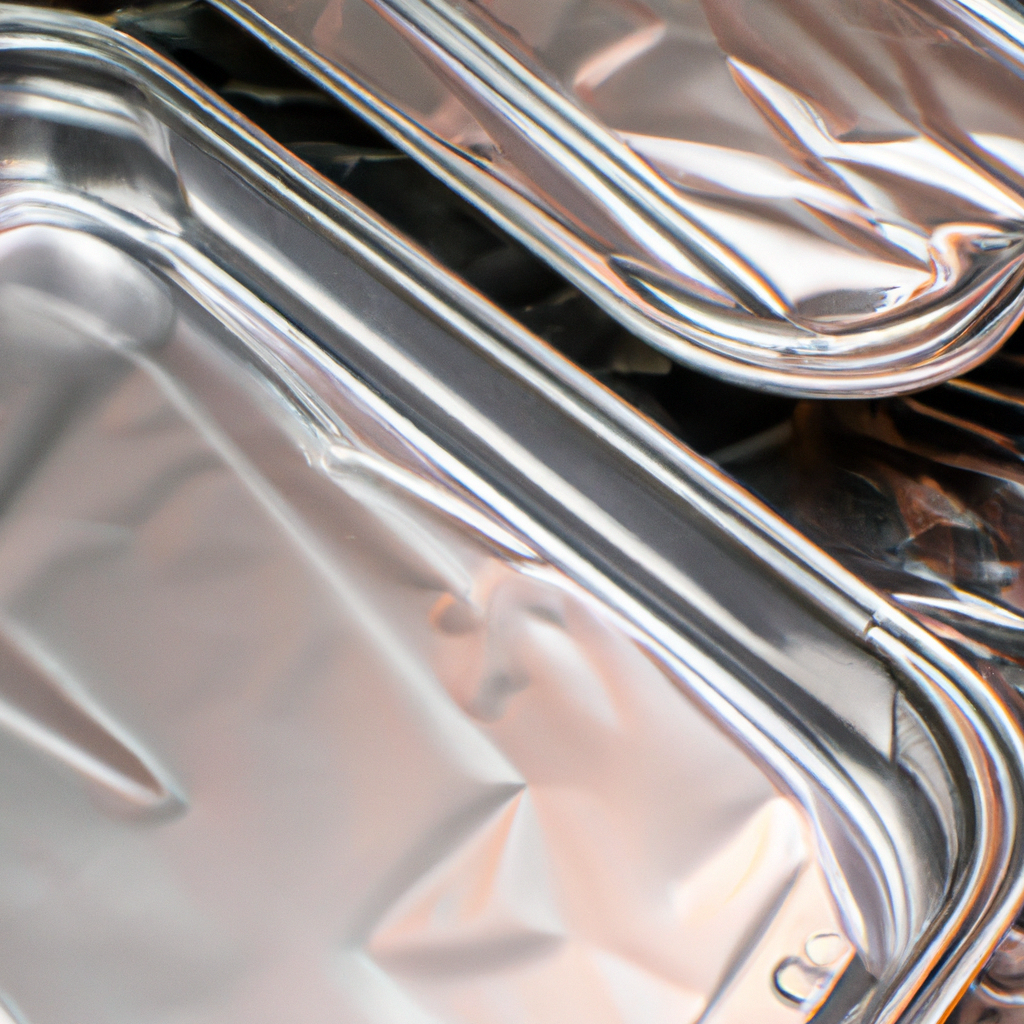
Hard-Anodized vs Coated vs Clad
It’s worth noting the differences between hard-anodized, coated, and clad cookware, as these variations can significantly impact your cooking experience.
Hard-anodized cookware, for instance, has a tough surface that’s corrosion-resistant. However, its lifespan usually caps at around 3-5 years.
Coated cookware, on the other hand, has a layer of ceramic or non-stick material, which prevents food from reacting with the aluminum. But, it tends to last only 1-2 years.
Clad cookware combines the best of both worlds – the quick heating of aluminum and the durability of stainless steel. Plus, it’s dishwasher friendly and has a longer lifespan.
Ceramic pans offer a lasting coating, but they lose their slickness after 50-60 uses. So, choose wisely!
Durability and Lifespan
Let’s chat a bit about the life expectancy and robustness of these kitchen essentials. It’s important to understand that not all aluminum cookware is created equal. Depending on the type, your pan’s lifespan can drastically vary.
| Cookware Type | Lifespan | Dishwasher Safe |
|---|---|---|
| Hard-Anodized | 3-5 years | No |
| Non-stick Coated | 1-2 years | Yes |
| Clad | Indefinite | Yes |
| Ceramic Coated | 50-60 uses | Yes |
| Untreated Aluminum | Varies | No |
As you can see, clad cookware takes the cake for longevity and ease of cleaning. But remember, no matter the type, proper care is key to maintaining your cookware’s performance and lifespan. So, treat your pans right and they’ll return the favor!
Health Concerns
So, are there any health risks to using these versatile cooking tools? While aluminum pans and foil are incredibly useful in the kitchen, it’s important to know that untreated aluminum can react with acidic foods. This reaction can cause your food to have a metallic taste and cause the cooking surface to pit.
However, these issues can be avoided if you’re using hard-anodized, coated, or clad aluminum cookware. These types of cookware have been treated to prevent the leaching of aluminum into your food.
- Hard-anodized cookware has a durable, corrosion-resistant surface.
- Coated cookware has layers of ceramic or non-stick coating.
- Clad cookware is made of aluminum and stainless steel for durability and quick heating.
Remember, breathing in aluminum dust or fumes can be harmful, but aluminum exposure through food is generally safe.
Proper Usage Tips
When it comes to maximizing the benefits of these versatile kitchen tools, there are some usage tips worth taking into account. First, always preheat the pan before adding your food. This ensures even heat distribution and minimizes the risk of food sticking to the pan.
Next, consider the type of food you are cooking. Acidic foods can react with the aluminum, so it’s best to avoid these.
Finally, remember that while aluminum foil pans are sturdy, they are not as robust as iron or steel pans. Be sure to handle them with care to prevent damage.
Here’s a handy table summarizing these tips:
| Usage Tips | Why It’s Important |
|---|---|
| Preheat the pan | Ensures even heat distribution and minimizes sticking |
| Avoid acidic foods | Prevents reaction with aluminum |
| Handle with care | Prevents damage to the pan |
Frequently Asked Questions
What are some alternative materials for frying pans if I am not comfortable using aluminum?
If you’re not keen on using aluminum for frying, there are several alternatives. You can opt for stainless steel, cast iron, or copper pans. Non-stick pans with ceramic or Teflon coatings are also great options.
How does the weight of aluminum foil pans compare to other types of pans?
Aluminum foil pans are notably lighter than other types of pans, such as cast iron or stainless steel. This makes them easy to handle and ideal for tasks that require frequent movement in the kitchen.
Can I use aluminum foil pans on an induction cooktop?
Sure, you can use aluminum foil pans on an induction cooktop, but you’ll need a magnetic induction disc. This disc helps transfer heat from the induction cooktop to the aluminum pan, ensuring your food cooks evenly.
How should I dispose of or recycle my used aluminum foil pans?
After using your aluminum foil pans, rinse them off to remove any food residue. Then, you can recycle them in your regular recycling bin. If they’re heavily soiled, it’s best to throw them away.
Are there any specific foods or recipes that are particularly well-suited for cooking in aluminum foil pans?
Absolutely! Aluminum foil pans are great for baking dishes like lasagna or casseroles. They’re also perfect for roasting vegetables or meats, as they conduct heat well. However, avoid cooking acidic foods due to reaction risks.
Can a Panini Maker Be Used to Fry Food?
A panini maker explained: While a panini maker is primarily used for making delicious grilled sandwiches, it can also be employed to fry certain foods. By adjusting the temperature and adding a touch of oil, you can transform your panini maker into a makeshift fryer, ideal for cooking small items like potato chips or even crispy chicken tenders.
Conclusion
So, can you fry in aluminum foil pans? Sure, but be mindful of their limitations. They’re not ideal for deep frying or cooking high-acid foods. But for a quick, convenient solution, they’re hard to beat. Just remember to keep temperatures between 320°F-374°F, and use non-stick aids.
Despite their quirks, aluminum foil pans are a budget-friendly staple in many kitchens. With proper care, they can serve you well.

